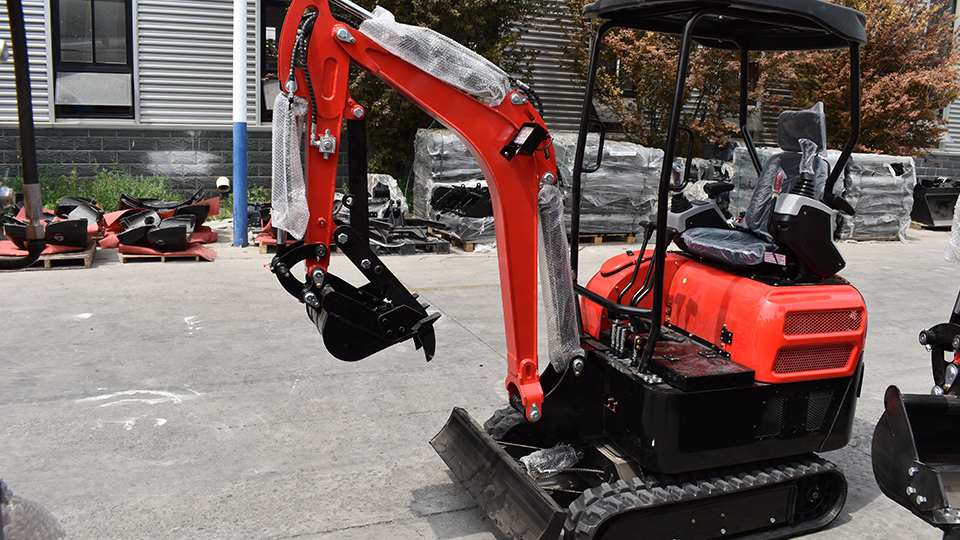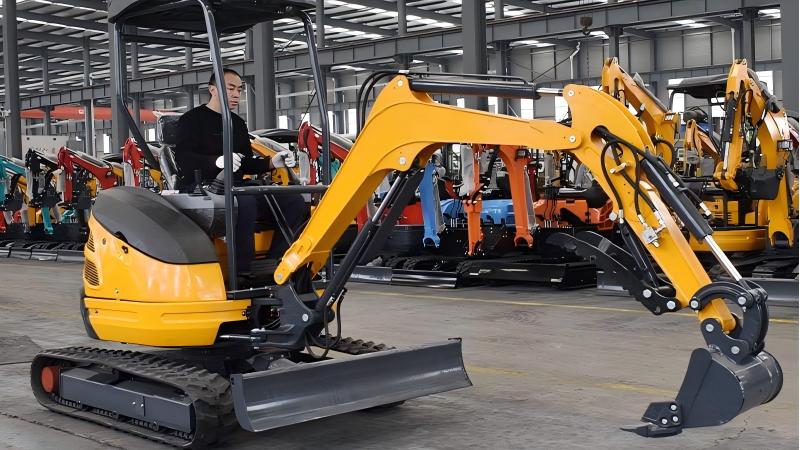Operating Weight and Size Class
The operating weight of an excavator is arguably the most fundamental specification, influencing almost every other aspect of its performance and suitability for a given job. It dictates the machine's stability, digging power, lifting capacity, and even its transportability.
Excavators are broadly categorized by their operating weight:
Mini Excavators (under 6 metric tons): These compact machines are highly maneuverable and exert low ground pressure, making them ideal for landscaping, residential projects, utility work, and confined spaces. Their smaller size also translates to easier and more cost-effective transportation.
Small Excavators (6 to 10 metric tons): Bridging the gap between mini and medium-sized machines, these are suitable for a wider range of urban construction tasks, trenching, and light to medium-duty excavation.
Medium Excavators (10 to 40 metric tons): These are workhorses for general construction, road building, and deeper trenching. They offer a good balance of power, reach, and maneuverability for various applications.
Large Excavators (over 40 metric tons): Designed for heavy-duty applications such as mining, large-scale demolition, and major infrastructure projects, these machines deliver immense power and lifting capacity but come with significant transportation and ground pressure considerations.
Considerations for Operating Weight:
Job Site Constraints: The physical dimensions of the job site, including access points, overhead clearances, and ground conditions, will heavily influence the acceptable operating weight. Tight urban environments often necessitate mini or small excavators, while open-pit mining operations demand large ones.
Ground Bearing Pressure: Heavier excavators exert more pressure on the ground. If working on soft, sensitive, or delicate soils (e.g., wetlands, manicured landscapes), a lighter machine with lower ground pressure (often achieved with wider tracks or specialized undercarriages) is crucial to prevent damage. Conversely, hard, compacted ground can accommodate heavier machines.
Transportability: The larger the excavator, the more challenging and costly it is to transport. Buyers must factor in the need for specialized trailers, permits, and logistical planning for larger machines.
Lifting Capacity and Stability: Operating weight directly correlates with lifting capacity. A heavier machine provides a more stable platform for lifting and placing heavy objects, but balance and counterweighting are also critical.

Engine Power (Horsepower and Torque)
The engine is the heart of an excavator, providing the power for all hydraulic functions. Engine power is typically measured in horsepower (HP) or kilowatts (kW), and torque indicates the rotational force the engine can generate.
Considerations for Engine Power:
Application Demands: For demanding tasks like breaking through hard rock, heavy digging, or operating power-hungry attachments (e.g., hydraulic hammers, mulchers), a higher horsepower engine with robust torque output is essential for efficient and productive operation. Lighter tasks like grading or fine landscaping may not require as much power.
Fuel Efficiency: While more power often means higher fuel consumption, modern excavators are equipped with advanced engine technologies (e.g., Tier 4 Final compliant engines, auto idle shutdown, smart cooling systems) designed to optimize fuel efficiency without compromising performance. Balancing power needs with fuel economy is vital for long-term operating costs.
Hydraulic System Synergy: The engine's power output must be matched to the hydraulic system's capabilities. An underpowered engine will limit the performance of a high-flow hydraulic system, while an overpowered engine might lead to wasted fuel if the hydraulics cannot effectively utilize the available power.
Hydraulic System (Flow and Pressure)
The hydraulic system is the excavator's muscle, converting engine power into the force and speed required for its movements and attachment operations. It's crucial to understand the difference between hydraulic flow and pressure:
Pressure (PSI/Bar): This determines the force an excavator can exert. Higher pressure translates to greater breakout force for digging in tough materials, increased lifting capacity, and more powerful operation of attachments like hydraulic breakers.
Flow (GPM/LPM): This dictates the speed of the excavator's movements. Higher flow enables faster boom, arm, and bucket cycles, leading to quicker material movement and increased productivity, especially in tasks like loading trucks or backfilling.
Considerations for Hydraulic System:
Attachment Compatibility: Many attachments (e.g., grapples, shears, augers, tiltrotators) have specific hydraulic flow and pressure requirements. Ensure the excavator's auxiliary hydraulic circuits can provide the necessary flow and pressure for all intended attachments. Some attachments may even require multiple auxiliary flows or a case drain line.
Simultaneous Operations: A well-designed hydraulic system allows for smooth and efficient simultaneous operation of multiple functions (e.g., digging, swinging, and lifting). Advanced systems may feature boom, arm, or swing priority functions to optimize specific tasks.
Fuel Efficiency and Control: Modern hydraulic systems incorporate features like electric-over-hydraulic controls, regeneration systems, and load-sensing pumps to enhance fuel efficiency, provide precise control, and prevent pressure loss (cavitation).
Dig Depth and Reach
Dig depth and reach are critical dimensions that define an excavator's operational envelope.
Dig Depth: The maximum vertical distance the bucket can dig below ground level.
Reach: The maximum horizontal distance the bucket can extend from the center of the machine.
Considerations for Dig Depth and Reach:
Project Requirements: Match the excavator's dig depth to the maximum required excavation depth for your projects (e.g., foundation work, utility trenching). Similarly, ensure the reach is sufficient to load trucks, clear debris, or work alongside structures without constant repositioning.
Boom and Arm Configuration: The length and configuration of the boom and arm significantly impact dig depth and reach. Different arm lengths are available for various models, with longer arms providing greater reach but potentially reduced breakout force or stability, especially with heavier loads. Long-reach excavators are specifically designed for extended reach applications.
Tail Swing: The amount the excavator's counterweight extends beyond the tracks during rotation. Conventional tail swing machines offer maximum stability but require more operating space. Reduced tail swing (RTS) or zero tail swing (ZTS) excavators are better suited for confined job sites, as their counterweight remains within the width of the tracks. This impacts overall reach and maneuverability in tight spots.
Bucket Capacity and Type
The bucket is the primary digging and loading tool. Its capacity and type directly impact productivity and efficiency.
Bucket Capacity: Measured in cubic yards or cubic meters, it refers to the volume of material the bucket can hold.
Bucket Type: Various bucket types are designed for specific materials and applications.
Considerations for Bucket Capacity and Type:
Material Density: The type of material being excavated (e.g., loose soil, compacted clay, rock, sand) dictates the appropriate bucket size and construction. Heavier, denser materials require smaller, more robust buckets to prevent overloading the machine, while lighter materials can be handled by larger buckets for increased volume per cycle.
Application Specificity:
General Purpose Buckets: Versatile for a wide range of tasks.
Heavy-Duty Buckets: Reinforced for abrasive materials like rock and broken concrete.
Trenching Buckets: Narrow, designed for creating precise trenches for pipes and cables.
Conclusion
Purchasing an excavator is a significant investment that requires careful consideration of numerous technical specifications. There is no one-size-fits-all solution; the ideal machine is always the one that best aligns with the specific demands of your projects, job site conditions, budget, and long-term operational goals. By thoroughly evaluating operating weight, engine and hydraulic power, dig depth and reach, bucket characteristics, undercarriage type, auxiliary capabilities, cab ergonomics, technological features, maintenance requirements, and brand reputation, buyers can make an informed decision that ensures optimal performance, productivity, and profitability for years to come. Engaging with reputable dealers, thoroughly reviewing specifications, and even test-driving machines when possible can further solidify the decision-making process.
Post time:Sep-25-2020


